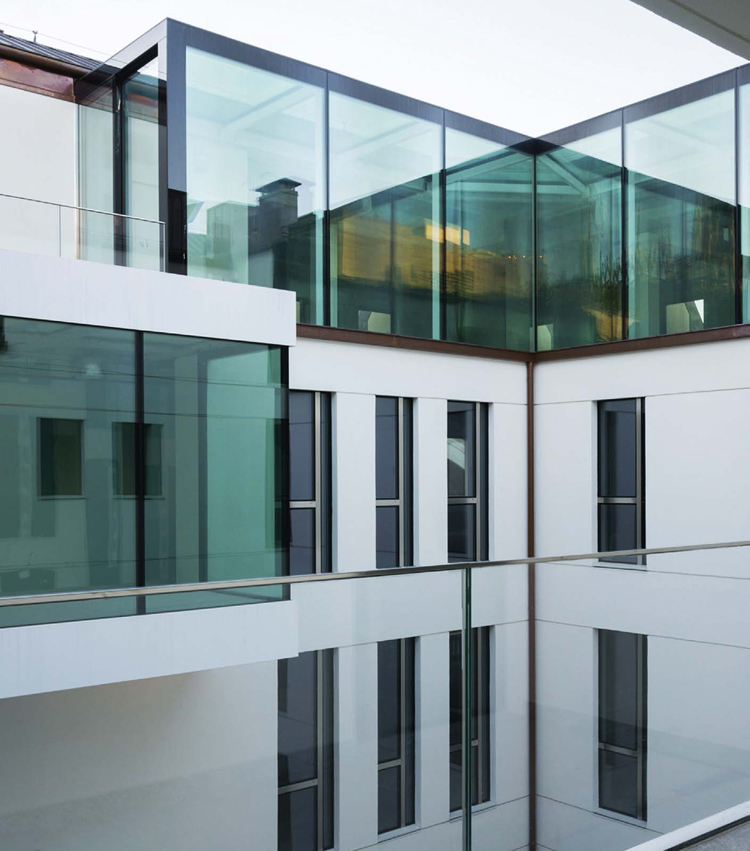 World GBC, acronym for Green Building Council, is one the leading global association whose goal is to make the building sector sustainable. Born in 1999 in California, with member organizations in over 80 countries, it is the largest international organization influencing the green building marketplace. It represents over 30,000 property and construction companies, while supporting existing and emerging GBCs at national scale, and provides them with tools and strategies to promote green building across the globe, with the clear goal of reducing carbon emissions, build healthy and regenerative environment and support a new vision for the built environment. GBC is associated with the development of the Leadership in Energy and Environmental Design (LEED) green building rating systems and its annual Greenbuild International Conference and Expo, the world’s largest conference and expo dedicated to green building, both created by the US branch of GBC.
World GBC, acronym for Green Building Council, is one the leading global association whose goal is to make the building sector sustainable. Born in 1999 in California, with member organizations in over 80 countries, it is the largest international organization influencing the green building marketplace. It represents over 30,000 property and construction companies, while supporting existing and emerging GBCs at national scale, and provides them with tools and strategies to promote green building across the globe, with the clear goal of reducing carbon emissions, build healthy and regenerative environment and support a new vision for the built environment. GBC is associated with the development of the Leadership in Energy and Environmental Design (LEED) green building rating systems and its annual Greenbuild International Conference and Expo, the world’s largest conference and expo dedicated to green building, both created by the US branch of GBC.
After becoming prominent at global level, thanks to the work of the ex-president Rick Fedrizzi, who has been able to re-tool the World GBC creating a path forward, the association is now poised to lead the acceleration of the building sector transformative process under the guidance of its new president, Singapore born Tai Lee Siang. His philosophy revolves around some key pillars: transformation should be holistic and at grand-scale. The green building revolution can no longer be done one building at a time. Blocks, neighbourhood and whole cities should be either retrofitted or built with a solid near-zero emission, no-waste, regenerative philosophy in mind.
Renewable Matter interviewed Lee Siang during his visit at Palazzo Ricordi, a benchmark LEED-certified building, in Milan.
The WGBC challenge is larger and more complex than ever. A herculean task ahead: accelerate and industrialize the building sector and support the retrofit and regeneration of millions of buildings around the globe to cut CO2 emissions. What is your plan?
“Let me explain the context. I think there are two things we are looking at. One: how much time do we have? If we keep maintaining our business as usual soon global warming is going to be out of control, with a well-over 5 °C increase. So I think we agree that we have to look at 2030/2050 targets very seriously. We have to focus on bringing building standards to the highest level: Zero carbon emission by 2050, whether is new or whether is an existing building. Second: how can we involve a large number of stakeholders? We have to get our members to push initiatives, and focus on building aiming to the Zero carbon goal. In order to do so we need to engage citizens. This requires a great communication effort. We have and will have campaigns to reach out to ordinary citizens, community groups, to educate them on the benefits of green building. Scale is key in my visions. As I always said, buildings exist not in isolation, but in cities. Therefore, systemically, if the city is not green, no matter how green the building is, it’s not going to work in the long term. We need governments and PAs to green infrastructure may it be an entire city. We will be studying how we can do that. If we want to reach the target of the Paris Agreement and stay below the 2 °C we definitely cannot focus on single construction.”
During your presentation you affirmed that is very important to focus on developing countries. Is your goal to increase the number of GBCs in areas where there is more potential to achieve a green building revolution?
“Yes indeed, I want to see the number of Council rising in the gap regions, especially Africa and Middle East, where GBC has historically less impacts, measured in countries where we have members. I’m not saying that those countries don’t have green movements but they are not organized to tackle the construction industry and there is a massive potential to address development now while under process, than later. Therefore those are the two regions we want to spend more time investing our manpower and our resources.”
Talking about the low-hanging fruits to tackle green building, what should be done?
“I think we have to look at two priorities, both involving people. The first one is involving civilian governments and administrations. Once you have engaged with them, they will multiply and spread the vision, pushing for a top down leadership. This is why while in Italy I met the administration of the Municipality of Milan, Turin and many other cities, thanks to the support of GBC Italy.
“The second group of people we need to target is actually the building community making them understand the huge economical opportunity. Then of course you have an interesting opportunity given by social media and online newspaper: today with our campaigns we can reach millions in an instant. I do believe in the power of communication. GBC national communications offices play a key role and we need to acknowledge that. I think with a coordinated effort we can turn the tide a lot faster.”
Not only zero carbon emissions, but also future buildings will need to be circular, designed using recycled materials and constructed to be reused, recycled, and ready to function as a regenerative body. This is even harder than just going low-carbon. Do you think it is too premature to go circular?
“The concept of circular building is not easily understood, because in a country or city where you have vast resources, where every day you could generate new materials locally, it is hard to understand the need for recycled or renewable materials.
“However, I worked in Singapore, a very small city-state, where we have no natural materials, everything has to be imported from overseas. There, we must, for example, recycle concrete. To the point that now it has become very popular, because the costs of demolishing buildings are higher than just recycling them. It instantly turned into a business. Now they are using recycled aggregate, generated from buildings that are demolished. But it is only possible because the costs of removing demolitions are higher than recycling. I am not sure this is really feasible in a country with resource availability like Germany.”

How about other materials?
“I see great opportunities for renewable materials, like wood or flooring materials such as nylon carpet or bamboo flooring, something that’s really user- and recycle-friendly. Overall I think we have an issue with perception: today people do not appreciate the use of recycled materials in brand new properties, especially if they are paying higher prices. However, people who have the right motivations and see the importance of renewable materials will accept using them, regardless of costs. Here I am not thinking about the builders, rather the end-users.”
How can we overcome this?
“In a very high-end environment it is very hard to change mind-set. Unless you create a culture, you won’t change it. Supposing, instead, everybody understands the importance of sustainability, as a culture, then using all renewable matter becomes a no-issue. It turn to be a pride of life, it becomes an identity. This could be the way.”
Singapore for you has been very instrumental in looking at cities in a different way. The city is known to be a great example of regenerative city due to land constraint. In particular, water availability is very limited, a key element to conserve in the future. What type of strategy should architects adopt for water?
“Water is not an issue for a single architect or a group of architects, water is an essential means of sustaining life, it has to been tackled at least at the city level, if not at a national level. So in countries like yours, where you have a lot of water, I assume, you may not feel it much.”
For now.
“In Singapore water comes from another country. So it means that if there’s no agreement, we have no water! Our security is at stake. So we learn to preserve every drop of water we have on the island, creating reservoirs, recycling water, even sewage water for drinking. So we are completely sustainable in terms of water supplies, despite not having ground fresh water.”
Not only does the building sector have to change to be future-proof. How will the city form change? What will the main driver be?
“Internet is definitely the answer to this question, in particular for Millennials. I truly believe sky-high property prices will not last for ever, Millennials already cannot afford them. So they have to think of new ways of living, new ways of working. They can no longer afford to live in the city centre. The only ones that can afford it are middle-aged people and businesses. This means that new communities have to be built far away from the city. Either regenerating old villages or new sites, completely zero emissions, where new generations can live, work and play, where they are connected with the rest of the world. They are very savvy Internet users and the greatest technology is the one could conserve your energy without moving unnecessarily. So you have more time to spend and improve the quality of your life.”
Is the city of the future not a megalopolis? Is it a smart village?
“Smart is up here in the head, knowing how to live and play, and have time and resources in your hand, because you don’t waste.”
For now GBC goals remain Zero energy emissions or will we see more work toward circular economy models?
“We are looking at working with all the GBCs to define a broad set of parameters, where we can have to slowly bring in the issue about recycling, embodied CO2, reuse, in addition to just energy factors. Materials have become important, but we can’t do this overnight, because countries need time to build their resources and capability. Right now we need to focus everybody’s attention to achieve GBC national target for buildings. But we will take into account any variables that can improve life on this planet.”
LEED – Leadership in Energy and Environmental Design, leed.usgbc.org
Greenbuild International Conference and Expo, www.greenbuildexpo.com
Info
Images: Evo Tre studio dealt with the sustainability aspect of Palazzo Ricordi (Milan)

